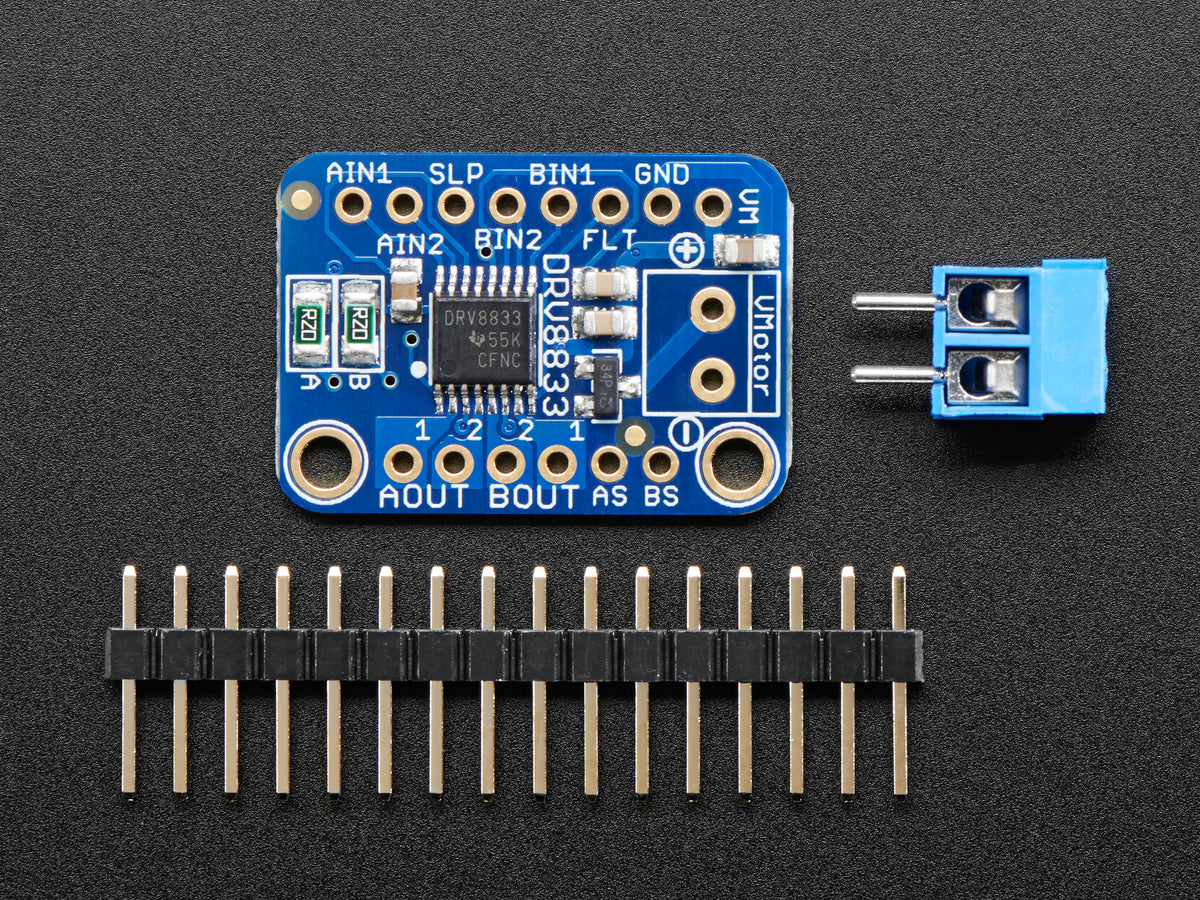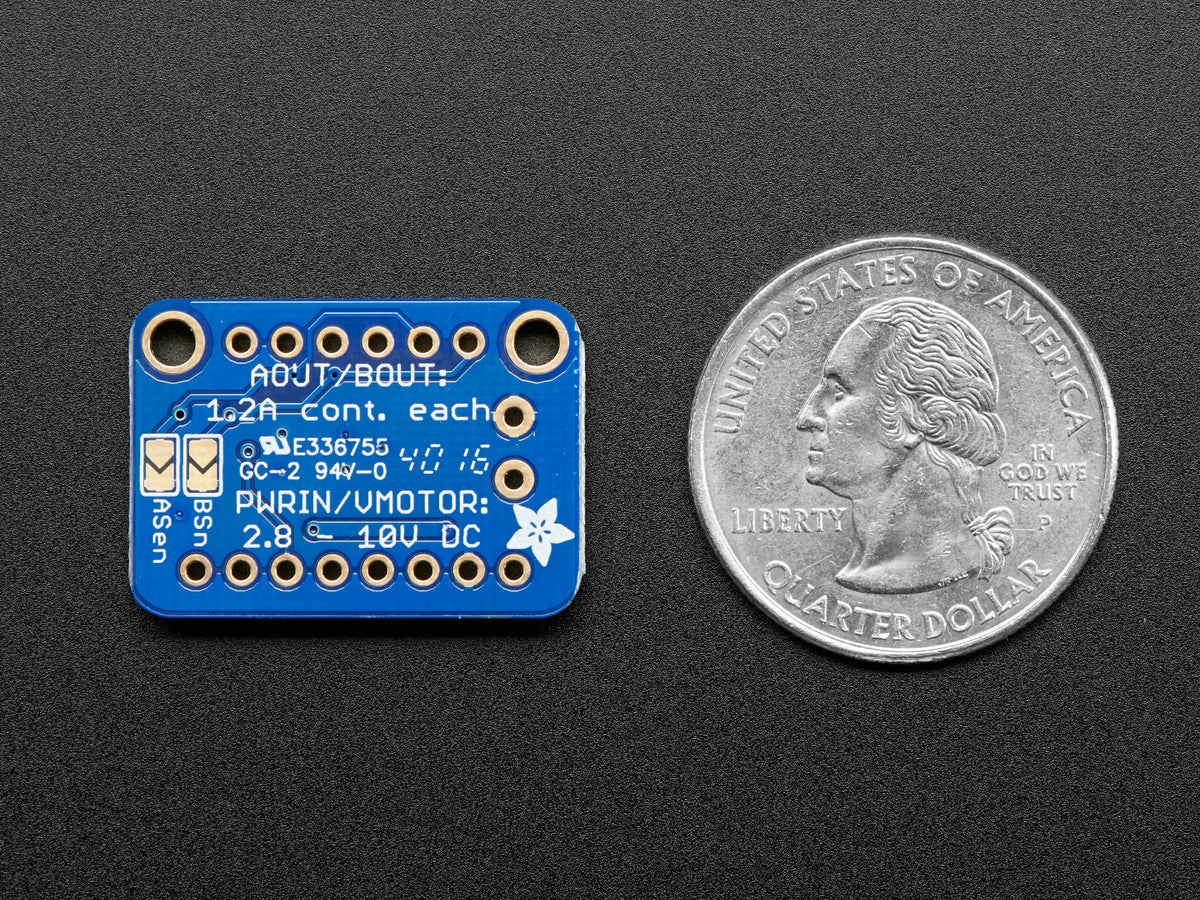Adafruit
Adafruit DRV8833 DC/Stepper Motor Driver Breakout Board
Adafruit DRV8833 DC/Stepper Motor Driver Breakout Board
Couldn't load pickup availability
Spin two DC motors or step one bi-polar or uni-polar stepper with up to 1.2A per channel using the DRV8833. This motor driver chip is a nice alternative to the TB6612 driver. Like that chip, you get 2 full H-bridges, but this chip is better for low voltage uses (can run from 2.7V up to 10.8V motor power) and has built in current limiting capability. We set it up for 1A current limiting so you don't get more than 2A per chip, but you can also disable the current limiting, or change it to a different limit!
We solder on DRV8833 onto a breakout board for you here, with a polarity protection FET on the motor voltage input. Each breakout chip contains two full H-bridges (four half H-bridges). That means you can drive two DC motors bi-directionally, or one stepper motor. Just make sure they're good for about 1.2 Amp or less of current, since that's the limit of this chip. They do handle a peak of 2A but that's just for a short amount of time, if you turn off the current limiting we set. What we like most about this particular driver is that it comes with built in kick-back diodes internally so you dont have to worry about the inductive kick damaging your project or driver! You also don't have to worry as much about burning out the chip with overdriving since there is current limiting.
There's two digital inputs per H-bridge (one for each half of the bridge), you can PWM one of the inputs to control motor speed. Runs at 2.7V-10.8V logic/motor power. The motor voltage is the same as the logic voltage, but logic voltage from 2.7V or greater will work so no need to worry if you are powering the motors from 9V and using 3.3V logic. For higher voltages and currents check out the DRV8871!
Comes as one assembled and tested breakout plus a small strip of header. You'll need to do some light soldering to attach the header onto the breakout PCB. Arduino, motors, and power supply not included.
Note: The terminal block included with your product may be blue or black.
Downloads






